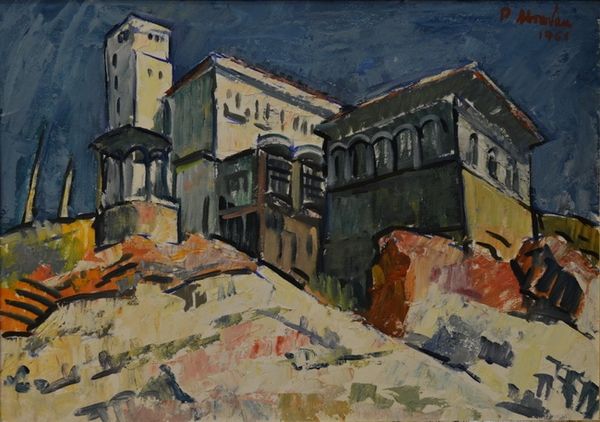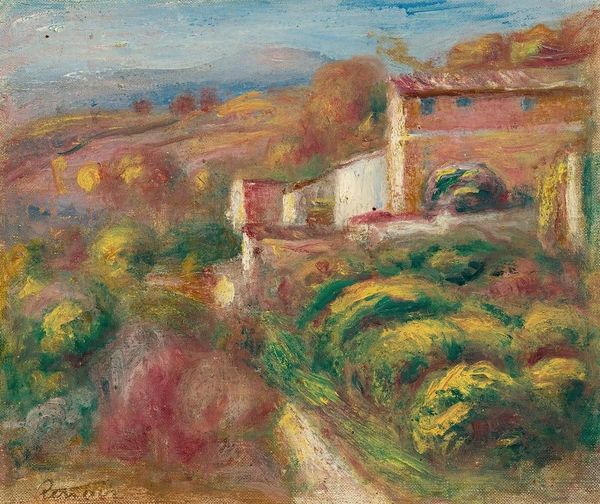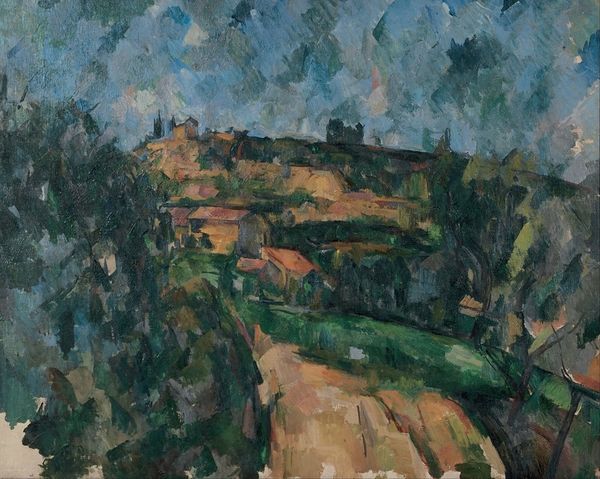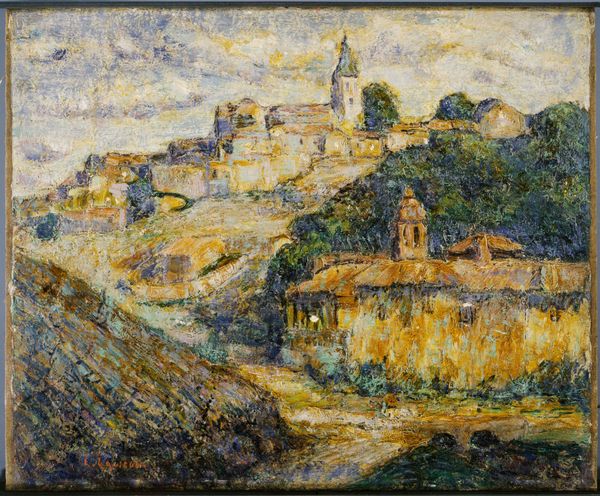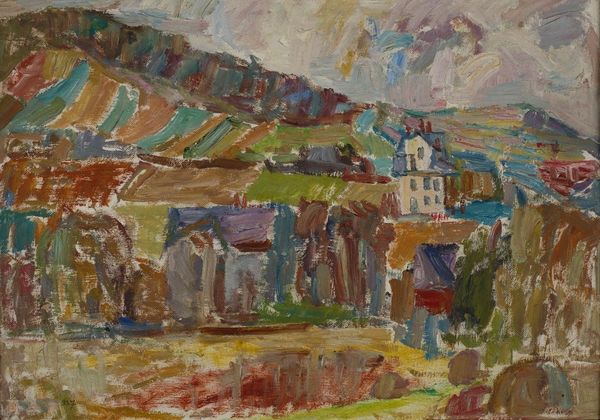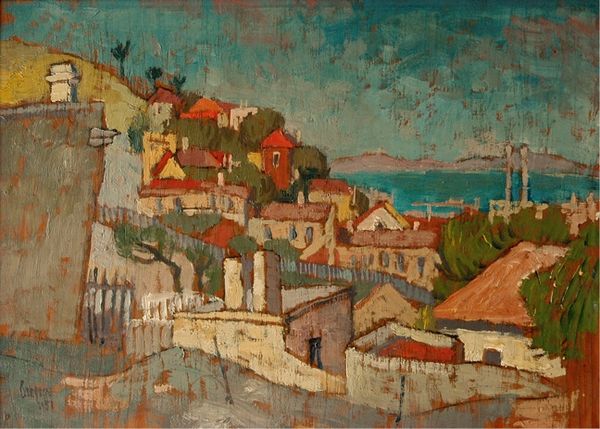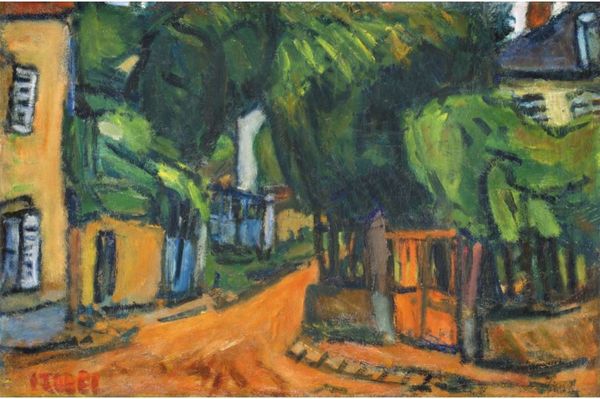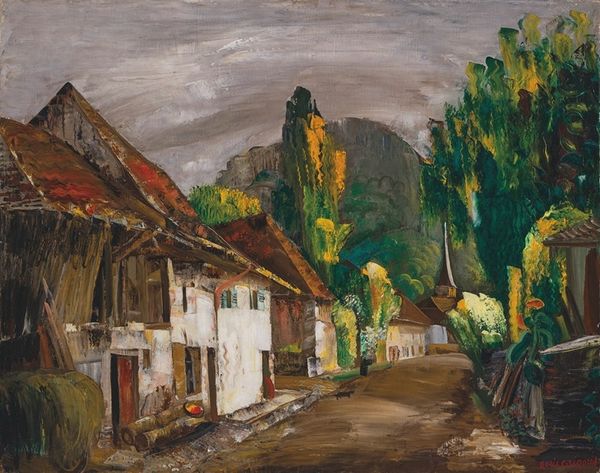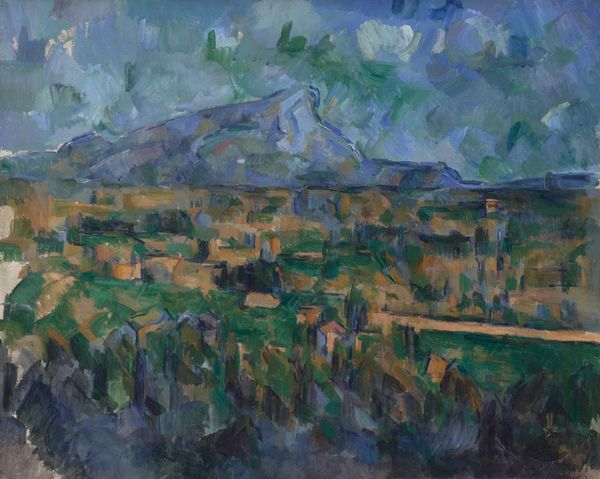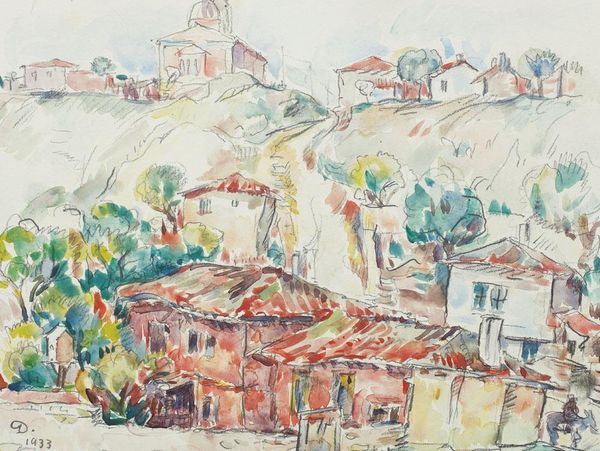
painting, oil-paint, impasto
#
painting
#
oil-paint
#
landscape
#
impressionist landscape
#
oil painting
#
impasto
#
expressionism
#
painterly
#
cityscape
Copyright: Pinchus Kremegne,Fair Use
Curator: Pinchus Kremegne’s “Village De Bourgogne” presents us with a densely packed cityscape, rendered in thick layers of oil paint. What impressions does it give you? Editor: I’m immediately drawn to the light; how it almost painfully defines each building. The mountain backdrop gives it a dramatic flair too. It feels both cozy and slightly ominous, like a fairy tale gone a bit sideways. Curator: The heavy impasto contributes to that sensation, I think. Look at how Kremegne manipulates the medium itself—each dab and stroke isn't just describing form but enacting a kind of emotional construction of the scene. The application of paint seems to wrestle with the architectural forms. Editor: It's funny, the heavy texture makes it feel…almost edible. Like a gingerbread village on a slightly stormy day. You know? A feast for the eyes with just a hint of melancholy. Curator: Kremegne worked within a lineage of painters who engaged deeply with the materiality of paint, its capacity to embody feeling. Consider the way landscape painting, traditionally a genre that emphasized the sublime power of nature, is reconfigured here. The village is still subject to natural forms but it’s humanity asserting itself through form and labor. Editor: Right, and look how he frames this scene! We're viewing the village almost head-on, giving the perspective an immediate intimate feeling. Almost voyeuristic if you consider the darkness lurking behind the mountains. It feels raw and genuine to me. I wonder what inspired Kremegne to express the architecture so dramatically? Curator: Kremegne had a unique way of merging Expressionist emotion with Impressionist observation, documenting village life with almost unsettling immediacy. The architecture conveys the social and working existence that shaped the village, representing an evolution from older idealized rural depictions to modern, material realities. Editor: I appreciate the perspective you bring—unveiling the means of production in plain sight for everyone to enjoy! Curator: And thank you, for noticing how art can be not just visually appealing, but also deliciously complex.
Comments
No comments
Be the first to comment and join the conversation on the ultimate creative platform.
